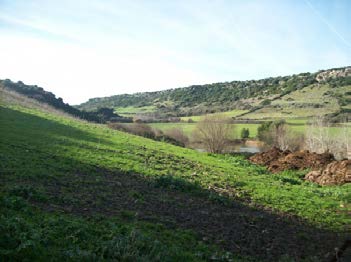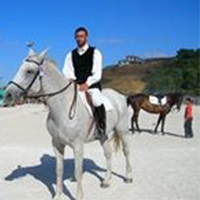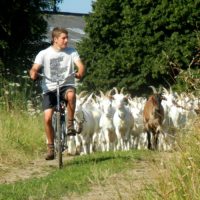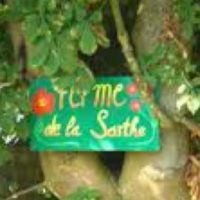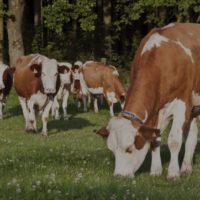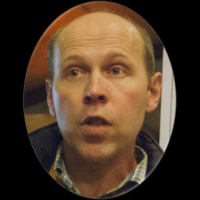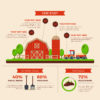Description
Background
Up to the early ‘80s, Mr. Pulinas profitably produced sheep milk that he sold to dairy factories. In fact, milk price was high and guaranteed a good income. Dairy factories used sheep milk to produce mainly Pecorino Romano PDO, an aged hard cheese used in blends with other cheese varieties as grated cheese and mostly marketed in America. Starting from 1982, the demand of Pecorino Romano underwent cycles of low and higher demand and the market suffered from saturation, due to the great amounts of cheese offered by dairy industries. Consequently, sheep milk price started to have high market volatility. The farmer income became extremely variable from year to year. The farmer was forced to revise his farming system to try to stabilize and preserve his income and plan investments. Until that moment, Mr. Pulinas had been adopting a semi-intensive livestock farming system. In his 85 ha farm, 20 ha were cultivated with cereals for grain production, 24 ha were seeded with annual forage crops for haymaking, 6 ha were cultivated with mays for silage production under irrigation, and 26 ha were covered by natural permanent pastures. Every year, he carried out ploughing, fertilization, sod breaking and sowing to harvest forage for sheep, sustaining high costs for soil tillage and purchase of seeds. Grasslands were managed with rotational grazing (few days). Sheep diet was integrated with concentrates and corn silage to boost milk production.
Detailed description
The farmer aimed at giving a chance of survival to his farm in a changing world by looking for solutions to reduce costs and, possibly, to increase income. He decided to increase the areas covered by permanent pastures in the farm, avoiding costs for annual soil tillage. Moreover, he stopped milk sales to dairy industries, built a farm mini-dairy to process its own milk into cheese, and started to sell his dairy products.
The first problem the farmer faced was how to increase of the area under permanent pastures, following the abandonment of intensive cropping of annual forages and concentrates (mais) and the annual soil tillage (plough). He decided to collaborate with researches to test new species and their mixtures that would meet his requirements. He sowed innovative mixtures based on local annual self-reseeding and perennial clovers and grasses (i.e. Lolium rigidum, Medicago polymorpha, Trifolium subterraneum, T. pretense).
The second problem to face was to how to enter into the market with his cheese. He studied the market of regional dairy products. He realized that the most interesting product he could offer in a saturated market was fresh ricotta cheese at the end of summer (September), when the offer of this product was negligible because most sheep were dry. For this reason, he started to carry out the out-of-season sheep mating to increase milk production during summer months. Later, he abandoned this practice and now, he is promoting summer milk production in a part of the flock that lamb in May–June.
Currently, he manages 53.5 ha of improved pastures established in different periods, 5.5 ha of natural permanent pastures, 2 ha of sulla and 15 ha of crops under annual rotation for haymaking (oat-Italian ryegrass in mixture followed by annual legumes). The farmer fertilizes soils with diammonium phosphate before seeding new pastures (200 kg/ha), incorporating the fertilisers in the soil during tillage and does not use fertilizers during pasture growth. In opposite, the farmer uses ammonium nitrate during crop growth of annual forage crops for haymaking, in addition to diammonium phosphate. Overseeding in permanent pastures is carried out, when necessary. Pastures are divided in 5-6 paddocks (4-7 ha each) used for lactating ewe. The rest of pastures is divided in small plots (1-1,5 ha) where sheep with lambs graze. The farmer uses daily pasture rotation in substitution of classic rotational grazing of paddocks because he observed an improved herbage production and quality and an improved weed control. Fresh forage is available all the year, excluding dry season (from June to September), when sheep graze on stubbles and high quality hay and concentrates integrate the diet. At the end of spring, the farmer cuts herbage still available in pastures, as well as after summer grazing. The farm is now fully self-sufficient in hay and straw production. The farmer purchases small amounts of corn flour, soy flour, soybean hulls and fava bean to integrate sheep diet during lactation.
He processes in his mini-dairy about 80,000 l of milk per year. The farmer sells his cheese and fresh ricotta cheese both on farm and in his shops, which he opened in a nearby town and in a touristic village in North Sardinia. He also supplies small-specialized shops in high quality products in the chief-town and neighboring villages and is starting a web commerce.
The farmer also joined the initiative “Adotta una pecora” (Adopt a sheep), suggested by one of his friends, a shepherd, to look for economic help of sensitive and caring people to environmental and cultural problems to the pastoral world. In change of a fix sum of money, the farmer offers certified organic products directly, avoiding costly and unnecessary steps, guaranteeing the consumer even the possibility of a direct control of production.
Results
The farmer workload increased due to the on-farm cheese-making, and he involved in farm activities his son Giuliano and a seasonal worker. Nonetheless, his income increased to a notable extent, thanks to the high consumers’ demand and higher price of dairy products sold at the end of summer. The wider use of permanent pastures and the lower levels of inputs sensibly reduced the production cost of milk. Milk quality and cheese yield per liter was improved, too. The farmer obtained also a higher yearly forage production, thanks to the extended forage growing season and forage availability of permanent pastures (especially in early autumn and late spring), if compared to annual forage crops.
Adoption criteria
Other farmers can successfully adopt improved permanent pastures if some micro-climatic features are met in their farms. The innovative farm is located in the slopes of a hilly site, and it is characterized by fresh soils, high-size soil seed bank and good organic matter content facilitate the establishment of long-term grasslands. The farm proximity to chief-town and other villages is a condition that make easy commercial exchanges and product selling.
Future prospects
The farmer thinks that permanent pastures can be further improved if future research on native forage species will be carried out. To further extend seasonal forage availability, he especially hopes for native forage species with improved forage production and drought tolerance. He would appreciate also the availability of devices for forage dry matter measurements to improve the use of pastures in paddocks. Informal connections among farmers and the word of mouth could easily disseminate the innovation to neighboring farmers, but the advantages of the use of improved permanent pastures on farmer income and animal production should be disseminated more efficiently by extension services. Unfortunately, extension services are not working properly in all Italian regions. The threats come from the unfair competition of foreign low-price dairy products, if consumers are not sufficiently sensitized to environmental and cultural problems to the national pastoral sector. Another critical point concerning the farm management concerns the direct selling. Farmers are often not good sellers and do not have sufficient marketing skills.

